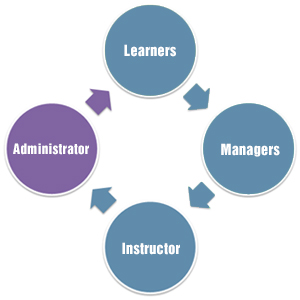Advantages of Gamification to Train Employees across All Levels

A technique that uses game-design elements and gaming principles in activities that are not necessarily game-based is called gamification. In the context of e-learning, gamification can mean transforming the learning experience into a sort of game by using achievement badges, leaderboards, point systems, level progressions, quests, etc. However, this doesn’t mean that the course is converted to a game, it just means that these gaming elements are integrated in the course to help learners achieve their goals and objectives better.
Gamification techniques leverage on people’s natural instincts for competition, achievement, status, and learning. Hence, they have been proven to enhance the learning experience for employees across all levels. Below are some of the advantages that gamification offers:
Increased Employee Engagement
Gamification creates a fully engaging learning experience for your employees. It holds their attention and motivates them using goal-driven modules. Using a reward-based system makes learners feel positive about their achievements in the course. More importantly, it does the job of getting your employees excited about learning. Gamification elements not only make learning informative, but also fun and exciting. Using interactive elements, it immerses learners in the course and makes them active participants in the learning process.
Advanced Feedback
Gamification is a great way for organizations to receive constant, relevant and automatic feedback. As these techniques use score-based learning strategies, employee performance can be easily compared against standard benchmarks. Using smart algorithms, organizations can get great insights into employee behavior, based on the various choices they make along the course. Feedback allows companies to address the shortcomings of the employees, thereby strengthening their skill development.
Mastery of Skills
One of most important things that game-based elements instill in learners is a drive to improve. Gamification taps into the natural tendency of people to improve their skills by trying repeatedly. An assessment designed around gaming elements will push learners to do their best and achieve the desired results. As gamification uses interactive and engaging elements, users display better knowledge retention and recollection, which in turn helps them hone their skills better.
Best of Mobile Learning
Mobile Apps integrated with gamification allow your business to harness the power of gamification the most. Mobile learning happens anywhere, anytime. A ‘gamified’ version of mobile learning can make the learning more desirable for employees, since they start viewing it as a fun activity. Using the touch screen and GPS features, available on most phones today, e-learning developers can really push the boundaries of what gamification can mean. This opens up more possibilities for more interactions and engagements.
Gamification is a highly attractive and impactful technique to make e-learning more feasible for your employees. Be it a fresher or an industry veteran. Be it a factory-worker or corporate executive. Who doesn’t like a little fun in the way they learn? Even dull and complicated subject matter can be absorbed more easily, because learners actually enjoy the process and participate actively.
Employees across all levels respond equally well to the elements of gamification. Not only that, it also works across industries. Be it marketing, media and entertainment, healthcare, customer service, manufacturing, etc. gamification sits well with a wide range of employees. It assures that learners don’t have to deal with the stress associated with learning, by keeping them focused on enjoying the e-learning course.
Gaming principles used are common and consistent across human nature. You can integrate gamification techniques in such a way that learners can effortlessly acquire new knowledge while participating in activities. Hence, the same gamification techniques can be deployed across employees, located in a widely spread geography. So transform your e-learning course into a dynamic and rich experience for your employees using gamification techniques.



![Selecting the Best E-learning Translator – 6 Aspects to Consider [Infographic]](https://blog.commlabindia.com/hubfs/Imported_Blog_Media/how-to-select-elearning-translator-infographic-main.png)
![7 Technology-enabled Learning Trends – What and Why [Infographic]](https://blog.commlabindia.com/hubfs/Imported_Blog_Media/trends-in-elearning-2017-1.jpg)
